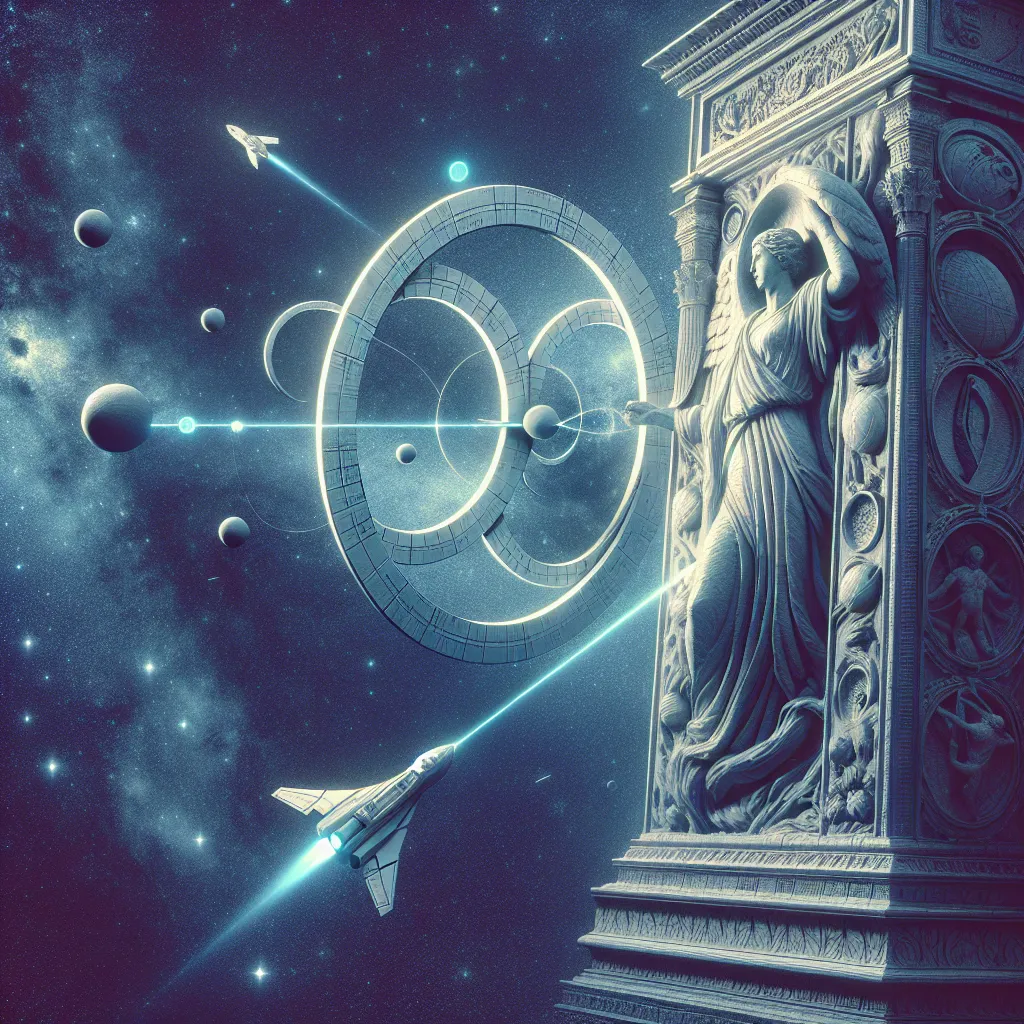Lagrange Points: Gateways to the Future of Space Exploration
 Quantum Cyber Solutions
Quantum Cyber Solutions
Published on
Sunday, March 24, 2024
Lagrange Points: Gateways to the Future of Space Exploration
================================================================
Authors

Name
Elon Tusk 😄
Twitter
Lagrange Points: Gateways to the Future of Space Exploration
Space—the final frontier. It’s not just the stuff of science fiction; it’s an ever-growing field brimming with opportunities for innovation and discovery. Today, we’re diving into a captivating concept: Lagrange points. These unique locations in space hold immense potential for the future of space-based observatories and fuel depots. Stick around to find out why!
What are Lagrange Points?
Let’s start with the basics. Imagine two celestial bodies, like the Earth and the Moon, exerting gravitational forces. Somewhere in the cosmic dance between these two bodies, there are points where their gravitational forces and the centripetal force of an orbiting object balance out. These are the Lagrange points, named after the mathematician Joseph-Louis Lagrange who first described them in the 18th century.
There are five Lagrange points, denoted as L1 through L5. The first three (L1, L2, and L3) lie along the line connecting the two large bodies, while the remaining two (L4 and L5) form equilateral triangles with them.
The Five Lagrange Points
- L1 - Located between the two celestial bodies, offering a spot for uninterrupted observation of the Sun.
- L2 - Found on the line beyond the smaller body, an ideal location for deep-space observations.
- L3 - Positioned directly opposite the smaller body, across from the larger one.
- L4 & L5 - Forming points of equilibrium ahead of and behind the smaller body in its orbit, maintaining a stable relationship with both bodies.
These points are unique cosmic sweet spots where gravitational forces balance so perfectly that a spacecraft can "park" there with minimal fuel consumption.
Space-Based Observatories: A New Era
One of the most exciting applications of Lagrange points is for space-based observatories. Let’s break down why these locations are so advantageous:
Uninterrupted Views
At points like L1 and L2, a telescope can keep a constant eye on either the Sun or the deep reaches of space without the interference of Earth’s atmosphere or magnetic field. For instance, the James Webb Space Telescope is set to be positioned at L2, allowing it to gaze into distant galaxies and star systems without any terrestrial interruptions.
Stability and Efficiency
The stability of L4 and L5 makes them perfect spots for long-term observational missions. Instruments placed here require minimal adjustments to maintain their position, saving energy and reducing the risk of failure. Imagine a floating observatory providing continuous data streamed back to Earth—like a constant tap into the universe's secrets.
Fuel Depots: Energizing Space Travel
Another thrilling possibility is the use of Lagrange points as fuel depots. Efficient refueling in space could be a game-changer, enabling longer missions and broader explorations. Let’s explore how this might work:
Reduced Energy Costs
Positioning fuel depots at Lagrange points can reduce the amount of energy needed for spacecraft to reach them. The minimal gravitational forces mean less fuel is required for adjustments, providing a more cost-effective solution for deep-space missions.
Gateway to Deep Space
Fuel depots at these points can serve as interstellar pit stops. Spacecraft heading to distant planets or even other solar systems could refuel and resupply before continuing their journey. This opens up the possibility for more ambitious missions that were previously unattainable due to fuel constraints.
Compatibility with Automated Systems
Imagine autonomous systems managing these depots, coordinating refuel missions without the need for constant human oversight. Such systems could optimize fuel usage and ensure that spacecraft are always mission-ready.
Conclusion
Lagrange points aren’t just theoretical constructs—they are the gateways to a new era of space exploration. From revolutionary observatories providing uninterrupted views of the cosmos to fuel depots enabling extended missions, these points hold untapped potential that could redefine our understanding and utilization of space.
So, the next time you gaze up at the night sky, remember that these seemingly invisible points of equilibrium are key to unlocking the vast wonders of our universe. Let’s keep pushing the boundaries of what’s possible, one Lagrange point at a time!
Stay tuned for more exciting updates on space exploration and other technological marvels. The future is out there; let's explore it together! 🚀
Discuss on Twitter • View on GitHub
Tags
Previous Article
Building Schools on the Space Coast 🌌
Next Article
SOC: The Digital Watchtower Guarding Against Cyber Threats 🌐🛡️
Subscribe to my newsletter
Read articles from Quantum Cyber Solutions directly inside your inbox. Subscribe to the newsletter, and don't miss out.
Written by
